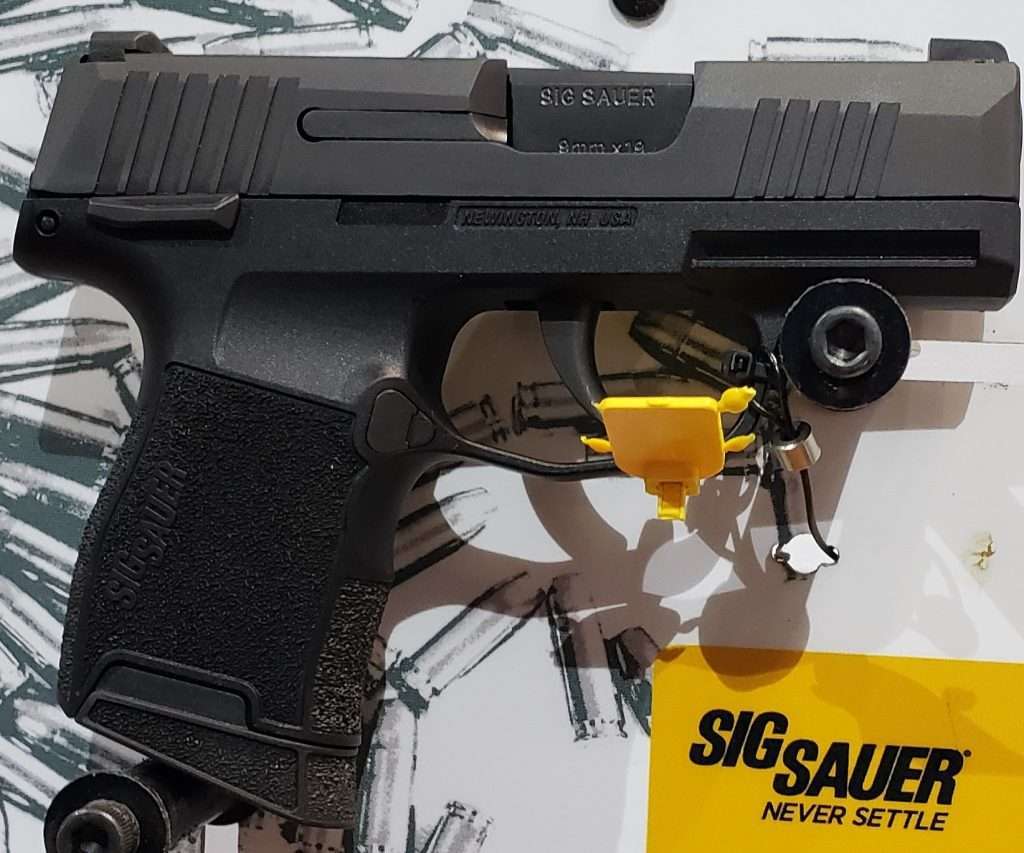
I saw a question posted recently in a Facebook gun group that caught my eye, mainly because it’s not a topic we’ve covered on this blog before.
The question was something like this: How many of you have a manual safety on your carry gun? If so, why?
I’ll attempt to answer this question in a pros and cons format, and then at the end of the article I’ll tell you why I don’t personally have a manual safety on any of my own carry guns, unless it’s based on the 1911.
But first, let’s attempt to answer what a manual safety actually is.
What is a manual gun safety?
A manual gun safety is a device on the pistol that prevents the gun from being unintentionally fired. The operator needs to manually disengage it before being able to fire the gun.
This is in contrast to a passive safety, which is a safety found on the grip or trigger. These safeties are passively deactivated by the proper handling of the gun, when the operator wants to fire.
Pros to a manual safety on your carry gun:
The main positive to having a safety on your carry gun is that there is an extra level of safety built in. When the safety is engaged, as long as it is functioning properly, you can be sure that you won’t unintentionally fire your gun.
It tends to give a newer gun carrier a piece of mind that they wouldn’t normally have when carrying a gun without a manual safety.
The other pro is similar, in that it helps prevent little hands and fingers from being able to shoot the gun.
So, some people with little kids tend to feel safer with that added layer of security on their gun, knowing that if it is engaged, the child will have to flip it off in order to fire the weapon.
Cons to a manual safety on your carry gun:
The main downside to a pistol with a manual safety is that it is another step you have to take in order to defend yourself.
When I say “another step” I mean in addition to getting your shirt out of the way, getting a nice, high grip on your pistol, pulling it out, presenting to target, and defending yourself if necessary.
All of the above, in addition to the extra amount of stress your body will be under when you decide that you need to defend yourself, is a lot.
What happens if you didn’t flip the safety off but the bad actor is right there on top of you?
Sure, you could just flip it off, but what happens if you don’t process that the safety is the reason why your gun didn’t fire?
Training and muscle memory:
When defeating the safety is built into your muscle memory, it’s not as big of a problem. The problem is that most people don’t have this muscle memory because they just go to the range to do target shooting.
Target shooting and training are not the same thing.
To get that muscle memory you have to train on a regular basis so that flipping the safety lever becomes second nature to you.
You want it to be built into your draw stroke.
This means you need to practice presenting to the target from the draw, and flip the safety off at some point before pulling the trigger. And, you have to do it a lot to get to the point where it’s second nature.
When you have a manual safety on your pistol, you have to practice taking it off. You have to practice drawing your gun appropriately.
Do I use a manual safety on my carry guns?
No, I tend to not have a safety on any of my carry guns, unless I’m carrying a test gun that came with a manual safety. And even then, I tend to not engage it outside of my testing.
The main reason as to why, is listed above. I don’t train to remove the safety before firing. If I’m going to be effective with a defensive encounter if I ever have one, I can’t change the way I carry too far.
I cannot add the safety if I don’t train to disengage it.
Plus, while I have kids in my house, the youngest is 9, I have taught them all about gun safety and the need to follow the rules. I don’t leave the my guns out for the kids to find and have full confidence in their knowledge and ability.
When you take the time to teach your kids about guns the right way, it removes any wow factor, and they actually won’t want to touch them without you knowing.
Conclusion:
You can carry a gun with a safety, or not. That part doesn’t really matter. All that does matter is that are training properly so that you can be effective if you ever need to defend yourself with your gun.
The only way to do that is by going to the range and doing it, as well as dry fire at home.

